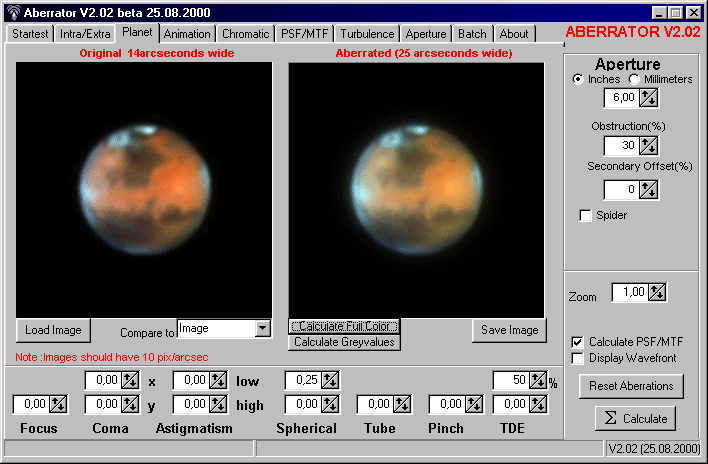|
|
 |
|
This part of the program uses external images of planets (or any other image) and changes according to the aberrations and the aperture-information. The theory of diffraction tells that larger telescopes will have smaller airy-discs. Therefore larger telescopes will show more details (and brighter) than smaller telescopes at the same magnification. All other effects will change the shape and light-distribution and the final generated image. The image used as input should be 10 pixels per arcsecond and no larger than 512 pixels in any dimension. Using more or less pixels per arcsecond will lead to unrealistic images. The realitive effects from aperture and aberrations on such image will be realistic, but its not what you would encounter at the eyepiece. The program default loads an image of mars (others are supplied, copies from NASA-websites), you can then choose to calculate the view from the eyepiece in grey-values (fast) or wait for a colour-picture to be build. The latter will take 3 times as much calculations. And once more you can save the images as Jpeg files. UPDATE: 30 OCTOBER look at the news section
|
| [ Aberrator] [ News] [Development] [ Star-Test] [ FAQ] [ Examples] [ Download] [ Links] | ||